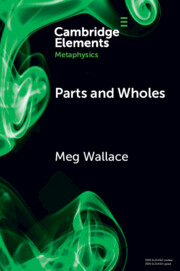Element contents
Parts and Wholes
Published online by Cambridge University Press: 02 June 2023
Summary
- Type
- Element
- Information
- Series: Elements in MetaphysicsOnline ISBN: 9781009086561Publisher: Cambridge University PressPrint publication: 29 June 2023
References
- 10
- Cited by

